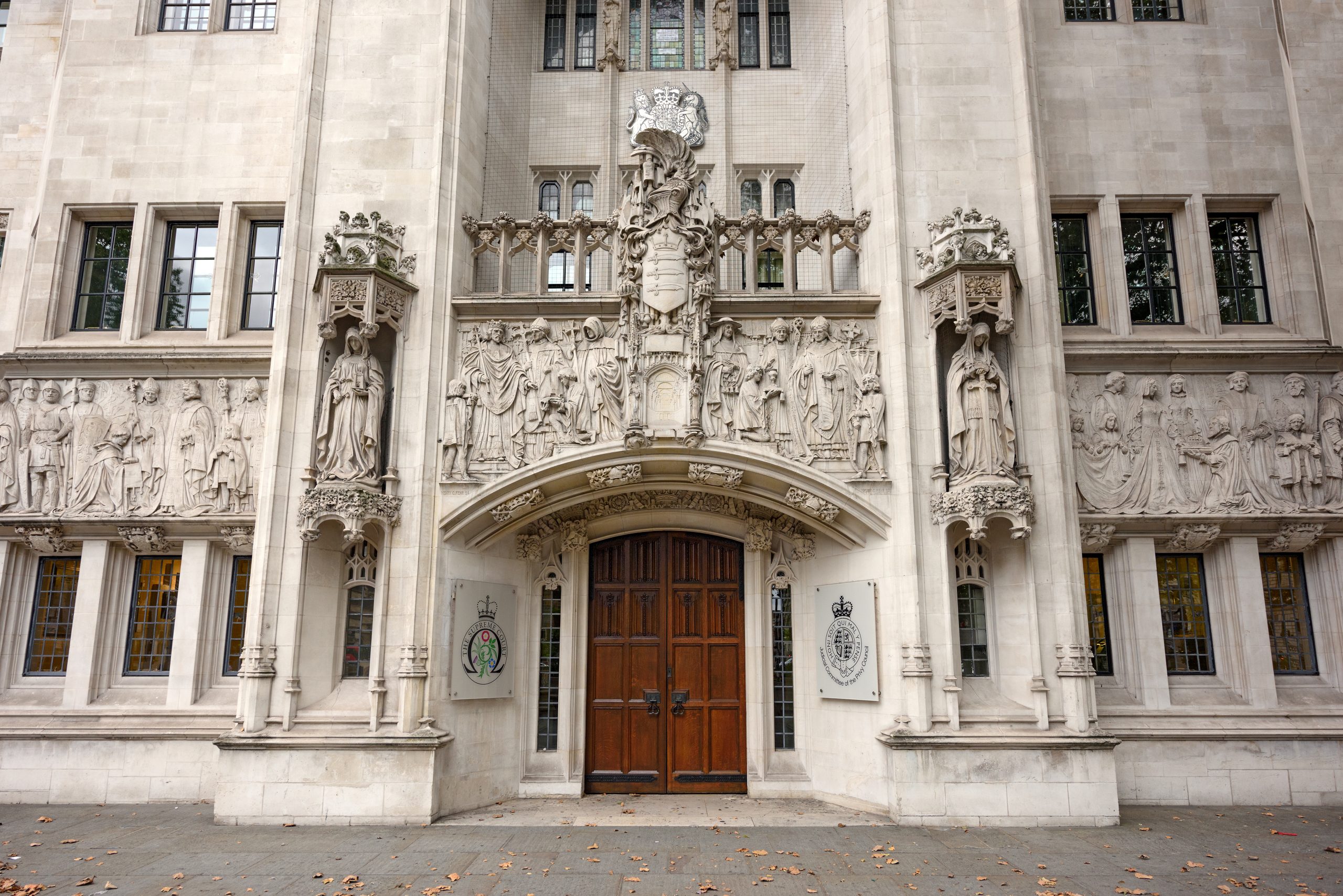Covid-19 BI Update: The Curious Case of the Missing Declarations, and litigation round up.
It is now over five months since the Supreme Court handed down its largely policyholder-friendly judgment in the FCA Test Case, but for a majority of policyholders, the end is not yet in sight.
The FCA’s latest figures, published on 14 June 2021, indicate that, of 46,854 claims reported to have been accepted by insurers, or where a decision on coverage is still pending, only 34% (16,159) have so far been paid in full. Moreover, the data published by the FCA does not include numbers of claims declined by insurers which may be disputed by policyholders, and excludes ‘contracts of large risks’ [i]. Whilst giving an indication of the (some might say slow) progress being made by insurers in settling undisputed SME BI claims, the data does not therefore shed any light on areas of ongoing dispute.
Meanwhile, an examination of cases proceeding in the courts (including the Test Case itself) reveals that the stage is set for a raft of further litigation in relation to issues that were either undetermined in the Test Case, or where a degree of uncertainty persists.
Supreme Court Declarations
Most notably, the Supreme Court Declarations, giving effect to the rulings set out in the Supreme Court’s judgment of 15 January 2021, as applied to the 21 sample policy wordings under direct consideration in the Test Case, are still awaited. It is unfortunate (whilst not intended as criticism levelled in any particular direction) that the outcome of the Test Case has yet to be finalised in this way, following the herculean efforts of the Parties and the Court in bringing the case all the way from inception to the Supreme Court on such an expedited timetable.
The Supreme Court’s conclusions on the legal issues, as set out in its 114-page judgment of 15 January, might be thought to be clear and not susceptible to further dispute between the parties. However, the Draft Declarations, published by the FCA on 15 February 2021, setting out the outstanding areas of disagreement between the parties and the alternative versions of the Declarations sought by each side, shows that not to be the case. In particular, the FCA and Insurers have clearly reached different views on what amounts to ‘restrictions imposed‘ according to the Supreme Court’s judgment, and the final form of Declarations will therefore be welcomed by policyholders and insurers alike in bringing some finality to the issue. The FCA last announced on 30 April 2021 that the Supreme Court Declarations ‘may be available’ in the next week, but has remained silent on the matter since then.
Other litigation – Coverage and Quantum
Whilst impressive in its scope, it was always acknowledged that the Test Case would not be capable of resolving all outstanding issues in relation to Covid-19 BI coverage. For some policyholders, the issue of whether their policy responds at all to losses flowing from the pandemic and the UK government response remains undetermined. For others who have had coverage confirmed, the focus has now turned to the issue of how much insurers are liable to pay. Unsurprisingly, that is frequently contentious, and affected by a number of common issues.
Coverage Issues
Specified Disease
The Disease clauses under consideration in the Test Case generally responded to any disease which is required to be notified to the authorities under the relevant public health legislation. Other, more restrictive Disease clauses only respond to losses caused by an occurrence or outbreak of one of a specified list of diseases, which in all cases did not include Covid-19. In Rockcliffe Hall v Travelers [1], the Court determined by way of summary judgment that such clauses are not capable of responding to Covid-19, rejecting the policyholder’s argument that Covid-19 was a form of ‘plague.’
See our update on the case here.
Damage to /Loss of Property
The Test Case itself considered coverage under ‘non-damage’ clauses i.e. extensions of cover responding to BI losses where no insured property damage has taken place. The issue of whether the presence of Covid-19 or Sars-Cov-2 on the premises could amount to or cause damage to or loss of property, thus triggering the core BI cover under most property insurance policies, fell for consideration in the early case of TKC v Allianz[2]. The Court held emphatically (again by way of summary judgment) that it could not. See our earlier update on the case here.
More recently, a claim filed by Xerox against FM Global[3] seeks to establish coverage for BI losses flowing from ‘physical loss or damage’, although that claim is being pursued as a satellite claim to litigation under a global master policy in the USA. It is not yet clear the basis on which Xerox will invite the Court to depart from the principles set down in TKC v Allianz.
Prevention of Access
The High Court’s findings in the Test Case in relation to Prevention of Access wordings were, by and large, negative, and many policyholders were disappointed by the FCA’s decision not to appeal the negative rulings. Following the outcome of the largely-successful appeal to the Supreme Court on other issues, the coverage position in relation to many Prevention of Access wordings now stands in stark relief to the position under the Disease wordings, and the findings of the High Court on which most insurers have now relied to decline coverage under Prevention of Access clauses are difficult to reconcile with the Supreme Court’s analysis of the covered peril and causation issues.
Unsurprisingly, many policyholders with Prevention of Access wordings are not content to abandon their claims, and a number of disputes are now moving forward to test the point further. The first of these to be litigated is Corbin & King v Axa[4], in which the Policyholder seeks to establish that the Covid-19 pandemic amounted to a ‘danger or disturbance’ within 1 mile of the insured premises, resulting in closure on the advice of a public authority, and triggering coverage for BI losses under a Denial of Access (non damage) clause.
The outcome of that case – and any others that may be joined to or managed with it – is likely to be highly influential on the coverage available under other typical Prevention of Access wordings in the market, and will therefore be closely watched by parties on both sides of the fence.
Disease ‘at the Premises’
The dispute as to whether Disease clauses requiring an occurrence of disease at the insured premises are capable of responding to Covid-19 BI losses in the same way as ‘radius’ clauses rumbles on. Following the conclusions of the Supreme Court on insured peril and causation, many Policyholders have argued that an occurrence of Covid-19 at their insured premises ought to be viewed as a proximate cause of loss in the same way as occurrences of Covid-19 within a specified radius of the premises (indeed some might say that an occurrence at the premises should be viewed as more proximate than occurrences away from the premises), and some insurers appear to have accepted coverage on this basis. A majority have not, however, and it remains to be seen how the point will be resolved.
For its part, the FCA has clearly indicated that it considers the ‘at the premises’ wordings to be capable of responding in the same way as the ‘radius’ clauses, and has instructed insurers to include such wordings in their most recent submissions confirming those policy wordings that are now capable of providing cover for Covid-19 BI losses. Whether insurers will go one step further in confirming indemnity under such policies without further litigation remains to be seen.
Quantum Issues
Aggregation
Non-damage BI extensions are typically sub-limited to 10% or less of the main BI sum insured, and in light of the scale of the losses suffered by many policyholders, the issue of how the sub-limits are available to meet the covered losses is therefore key. If Insurers’ liability is limited to a single sub-limit of liability, the policyholder is unlikely to make a material recovery in relation to the majority of its losses. If, on the other hand, the Policyholder can establish that it is entitled to recover multiple sub-limits of liability under the relevant non-damage BI extension(s), there may be better prospects of recovering all (or the majority) of its losses. How the covered losses are ‘aggregated’ for the purpose of the application of sub-limits is highly dependant on the individual policy wording, but typically depends on whether the sub-limit is expressed as applying ‘per loss’, ‘per claim’, ‘per occurrence’, per ‘event’, or ‘per originating cause’. There are many other variations and permutations of these words, and a long line of complex (and often contradictory) case law considering the meaning of these aggregating terms, typically in the context of war/terrorism, natural catastrophes, and professional risks. Of disease perils, there has been very little judicial consideration in the English courts, either in terms of aggregation or more generally, and unsurprisingly aggregation of Covid-19 losses is therefore set to be a key focus of the next wave of Covid-19 BI litigation.
Because of the peculiarities of specific policy wordings and the manner in which individual Policyholders have suffered loss, the issue of aggregation is less suitable for determination as a general market test case in the same way that the FCA sought to determine the coverage trigger issue. Nonetheless, there will be various points of principle that, once determined, will be influential in the determining the outcome under a variety of different wordings (including reinsurance contracts.) Various cases are now proceeding in the Commercial Court, in particular focusing on the issue of aggregation under the Marsh Resilience policy wording, one of the clear winners in the Test Case (where it was referred to as ‘RSA4’), and which contains occurrence-based aggregating wording.
Government Support
Many (if not all) policyholders have received some form of government support, in the form of grants, rates relief, and furlough payments over the course of the pandemic, and the issue of whether and how these amounts are to be applied to insurance claim calculations is hotly contested. Insurers for their part insist that any receipt of government support goes to reduce the loss suffered by the policyholder, and therefore the value of any claim under the Policy. Policyholders, in response, point out that government support payment are neither ‘Turnover’ nor a ‘Saving’ within most Policy definitions, and are not therefore to be taken into account within a typical Specification setting out the correct basis for calculating a BI indemnity under most policies. In light of the low sub-limits of liability available under most non-damage BI extensions, the suggestion by some insurers that failing to make deductions for government support results in a ‘windfall’ for policyholders, is viewed by many policyholders as insulting and a further example of insurers’ egregious attempts to limit their own liability.
The FCA has written to insurers expressing concern over the issue on several occasions, and the ABI has confirmed that some of its members have agreed not to deduct government grants from Covid-19 BI claims. However, the position in relation to other types of support, in particular furlough payments, remains highly contentious and unlikely to be resolved without litigation. It is likely that one or more of the existing cases proceeding through the courts will seek to test the issue.
Loss of Rent
While the Test Case considered and determined which events connected with the Covid-19 pandemic were capable of triggering coverage, the case did not consider the matter of what type of loss is covered by the sample clauses. In most cases, policies respond to loss of Gross Profit in one form or another, but in the case of commercial landlords, coverage is often provided for Loss of Rent Receivable. In relation to these policies, insurers have commonly taken the position that the landlord has not suffered a loss of Rent Receivable merely by virtue of the fact that its tenants have been unable to pay rent during periods of closure (due to a total lack of revenue); the landlord must also be able to show that the tenant has been relieved of its obligation to pay rent during the closure period, which in most cases will not be satisfied. Otherwise, the insurers say, the loss should fall on the tenant (who may or may not have BI cover), and not the landlord.
Landlords may reasonably question the commercial utility of such clauses if their response is limited in the way insurers claim, as the coverage provided would in real life be largely illusory. The issue has fallen for consideration, somewhat obliquely, in two recent cases, that were also decided on summary judgment, unfavourably for policyholders. In Commerz Real Investmentgesellschaft MBH v TFS Stores Ltd[5] and Bank of New York Mellon (International) Ltd and v Cine-UK Ltd and others[6] it was determined that the government-ordered closure of various retail premises did not activate rent cessor clauses or otherwise relieve the tenants from their obligation to pay rent under the relevant lease. The tenant’s argument that the landlord held insurance for loss of rent was also rejected on the basis that the insurance policies were only designed to respond where the rent cessor clauses were activated, and the existence of the insurance did not therefore affect the obligations as between the tenant and the landlord.
The initial view of the courts therefore appears to be that commercial landlords will in most cases have no valid claim for a loss of Rent Receivable due to Covid-19 closures. However, considering that both cases were decided by a Master on summary judgment, and with the insurance coverage issue being determined very much as a secondary issue (the Master in one case expressing reservations over determining the issue with no insurer as a party to the case), the reasoning in the two judgments might be viewed as far from final, and in view of the importance of the issue to a large number of policyholders, it seems likely that the point will be further tested in the courts in the near future.
The Path Ahead
It is clear that the Covid-19 BI has not only given rise to a host of new coverage issues, but also reignited a number of traditional areas of dispute in the field, each of which is generating further litigation now emerging in the courts. Although it will be regrettable for many policyholders that additional legal hurdles must be overcome before coverage of their claims can be established and or quantified, the further consideration by the courts of these issues in the round will, it must be hoped, lead to further clarification of the law underpinning business interruption insurance, and as such may be a welcome development in the longer term.
Aaron Le Marquer is a Partner at Fenchurch Law
[1] [2021] EWHC 412 (Comm)
[2] [2020] EWHC 2710 (Comm)
[3] Commercial Court Claim No. CL-2021-000138
[4] Commercial Court Claim No. CL-2021-000235
[5] [2021] EWHC 863 (Ch)
[6] [2021] EWHC 1013 (QB)
[i] i.e. where the policyholder exceeds the limits of at least two of the following three criteria: (i) balance sheet total: €6.2 million; (ii) net turnover: €12.8 million; (iii) average number of employees during the financial year: 250
Weathering the Hard Market: is your CAR Policy Watertight?
The increasing prevalence of water damage losses on construction projects, combined with hard market conditions, has led to a rise in disputes over insurance policy response for these types of events. Claims in consequence of cascading water from burst pipes or adverse weather conditions often give rise to disagreements over the occurrence and timing of ‘damage’, in order to trigger coverage under contract works policies, and a number of standard exclusion clauses may impact upon the level of protection.
Insuring Clauses
The legal test for damage requires proof of physical change to insured property, adversely affecting its value or usefulness. Authorities demonstrate a distinction between policies requiring ‘damage’ - which includes transient or reversible changes if time and money has been spent dealing with the problem (Ranicar v Frigmobile; The Orjula) - as opposed to policies with a ‘physical damage’ trigger, which may not respond in the absence of a permanent alteration in condition (Transfield Constructions v GIO).
The need for coverage in respect of temporary changes is particularly important in water damage scenarios, where the insured property could dry out relatively quickly. Insurers might suggest that no lasting damage remains, even if the policyholder has been put to considerable expense and inconvenience through a water ingress event, especially where guarantees relating to electrical elements of contract works may be invalidated.
It is sufficient for physical change to have occurred at a microscopic level, detectable only through careful examination using advanced inspection techniques, such as accumulation of dust on carpets (Hunter v Canary Wharf) or increased brittleness and liability to early degradation of a pastel painting following exposure to high temperatures (Quorum v Schramm). Accumulations of water can result in physical changes to insured property in the form of rot or fungal spores, especially in close proximity to timber elements, although expert assistance may be required to identify the presence of this type of damage.
Exclusions from Cover
Contract works policies typically exclude cover for damage resulting from changes in the water table level, and may refer to fungus or rot alongside other naturally occurring processes as part of a gradual deterioration exclusion.
Another key aspect of the policy wording determining the scope of protection for water damage events are relevant defects exclusion clauses. Contract works insurance usually contains a standard defects exclusion based on the DE or LEG suite of options, offering different levels of coverage for cost of repair associated with defective design, workmanship or materials. Failed connections in water systems may involve a combination of design or workmanship problems, and the proximate cause of loss will often need to be identified to determine policy response.
DE5 or LEG3 usually provide the broadest coverage for losses in consequence of defects, to include costs incurred to gain access to property damaged as a result of defects, and excluding only the cost of improvements. Some policies provide an option as to application of DE5 or DE3 / LEG3 or LEG2, at the policyholder’s option at the claims stage, allowing flexibility to determine which alternative produces the most favourable outcome with knowledge of the particular circumstances arising.
Some standard exclusion clauses (such as DE4) provide cover for damage to ‘other property’ caused by defects, but not the defective ‘part’ itself, which often leads to disputes over divisibility of insured property between defective and non-defective parts. In general terms, the courts will look to the commercial reality of whether a particular aspect of the development would be viewed by contracting parties as a separate package or phase of works (Seele Austria).
The aggregation wording in the policy may also impact upon coverage for complex aspects of contract works, such as structures formed from separate sections or modular elements, with the possibility of insurers arguing that multiple ‘losses’ have occurred for purposes of the limits of indemnity and deductible.
Policy Conditions
Careful consideration should be given to policy conditions requiring particular steps to be taken in relation to risk mitigation and claims handling.
In order to establish breach of a ‘reasonable precautions’ condition, the insurer must prove recklessness i.e. the insured subjectively appreciated the risk but didn’t care or ignored it; mere negligence will not suffice (Sofi v Prudential). This is distinguishable from policy requirements imposing positive continuing obligations on insureds to take specific actions, such as unoccupied buildings conditions. The recklessness threshold will not apply where there is “a highly defined and circumscribed set of particular safeguards which have to be put in place” (Aspen Insurance v Sangster).
Insurers are increasingly focused on water damage risk management procedures as part of the underwriting process, and may include specific provisions in the policy requiring compliance with e.g. CIREG best practice guidelines. The inclusion of ‘conditions precedent’ should be resisted, with use of appropriate ‘best endeavours’ type language especially if works on site involve third party sub-contractors, so that compliance with the condition is not entirely within the policyholder’s control.
Conclusion
Advice should be sought from specialist brokers on potential improvements to the scope of insurance for contract works, with particular reference to the trigger for coverage, exclusion clauses and policy conditions. When a loss does occur it is important to investigate and document the condition of insured property without delay following a water damage incident, with expert input if required, to minimise the prospect of insurance disputes.
Amy Lacey is a Partner at Fenchurch Law
Fenchurch Law joins City law firms in commitment to levelling up on social mobility in the profession
A group of trailblazing City law firms including Fenchurch Law Ltd have published a pioneering action plan to boost social mobility and widen opportunities within the legal sector and launched a Levelling Up Law Coalition to deliver on the recommendations.
Fenchurch Law and fourteen other City of London Law Society (CLLS) member firms have been working with Rt Hon Justine Greening’s Social Mobility Pledge on a strategy to open up the sector to a diverse range of backgrounds.
The firms have collaborated with a number of universities across the regions, including Bradford, Staffordshire, Lincoln, York St John and Liverpool John Moores in a bid to create new and wider pathways from higher education into the legal sector.
The action plan sets out recommendations for leading law firms to work together on solutions that benefit the whole legal profession. Research shows that more diverse companies are now more likely than ever to outperform less diverse peers on profitability* and the plan looks at how the profession can tap into talent from a range of backgrounds.
The project has been led by former Government Minister, Member of Parliament and city Solicitor, Seema Kennedy OBE. Fenchurch Law and the other firms now plan to go further and play a leading role in Britain’s national recovery from coronavirus, opening up greater access to careers in the legal sector.
The publication of the action plan also marks the launch of the group of firms forming a Levelling Up Law Coalition, coming together to take leadership on the levelling up agenda through the lens of the legal sector.
Seema Kennedy said: “The pandemic has caused many young people to lose jobs or have their future opportunities restricted. Meanwhile, there is now a building demand and need for reskilling and career changes.
“What is now abundantly clear is that levelling up needs to go far beyond just government action, we need businesses to play their role if we are to succeed. Through this action plan, CLLS members have shown that they are committed to playing their part in boosting opportunity and social mobility as part of our recovery.”
David Pryce, Managing Partner, Fenchurch Law “Levelling Up Law is the most effective initiative that I’ve come across with regard to promoting social mobility within the legal profession. The project’s goal of creating true equality of opportunity is vitally important not just in terms of basic fairness, but also because law firms have for too long drawn on an artificially limited pool of talent.
“If the UK is to retain its place as a leading global legal market, it is essential we start to recruiting based on potential, and stop favouring people based on their background and upbringing. Like most firms we have further to go on our journey to creating a truly diverse team, but I have no doubt that we will only be able to unlock our full potential once we do”.
All round protection for brokers: how protecting the underwriter can protect your client and protect you!
Our March 2021 article ‘Insurers bound by the small print? I should cocoa!’ briefly noted that the judgment in ABN Amro considered the scope of a broker’s duty to procure cover that meets the insured’s requirements and protects it against the risk of litigation. But what does that mean in practice, and can it really extend, as was argued in this case, to a duty to explain unusual clauses to underwriters?
One of the many roles brokers perform is in relation to policy placement, which role involves advising their clients and dealing with underwriters. As part of that exercise a broker must: (i) ensure that it understands its client’s instructions and in the event of uncertainty query, clarify or confirm the instructions given; (ii) explain to its client the terms of the proposed insurance; and (iii) ensure that a policy is drawn up, that accurately reflects the terms of the agreement with the underwriters and which are sufficiently clear and unambiguous such that the insured’s rights under the policy are not open to doubt. It is well-established law that in the performance of these tasks, a broker must exercise reasonable care and skill.
If the coverage is unclear, the client will be exposed to an unnecessary risk of litigation, and the broker will be in breach of its duty.
The scope of this duty was considered in the recent ABN Amro Bank case. By way of brief factual background, the claimant bank provided instructions to its broker that it required cover against its clients defaulting under a finance agreement. The broker placed the risk with RSA under an all risks marine policy. A bespoke clause was added to the policy midway through the policy period which had been drafted by the bank’s external lawyers. The effect of the clause was to provide the equivalent of trade credit insurance.
When subsequently presented with a £33.5 million for financial losses suffered by the bank, the insurer refused cover on the basis that the clause had widened the scope of the policy beyond what a marine policy would ordinarily provide. That disputed claim resulted in litigation, as part of which the court had to consider the role of the broker and what it was required to do in order to fulfil its duty to arrange cover which clearly and indisputably met the client’s requirements, and did not expose the client to an unnecessary risk of litigation.
On the facts, it was held that:
- a reasonably competent broker would have advised its client from the outset that the credit risk market and not the marine insurance market was a more appropriate market in which to place the cover the bank had instructed it to obtain. Such advice would have enabled the bank to make an informed decision as to how to proceed;
- having gone to the incorrect market, it became important for the brokers to explain to the underwriters what the clause was intended to cover; and
- any reasonably competent broker would have specifically pointed out the clause to the underwriters and talked through the amended wording and its implications.
The broker argued that this effectively imposed an unprincipled “duty to nanny”. The court clarified that there was nothing in its reasoning or conclusions which was intended to suggest that brokers generally owe duties to their clients to explain particular clauses, including unusual clauses, to underwriters.
Rather, in order to fulfil its duty to obtain cover that met the bank’s requirements and did not expose it to an unnecessary risk of litigation, and thereby protect its client’s position, the broker needed to give information to underwriters and discuss the implications of that information. In doing so, it would avoid problems which would potentially arise in the future if underwriters did not share the bank’s understanding of the unusual clause.
As such, the requirement did not amount to a duty to protect underwriters, it was about the steps that needed to be taken to fulfil the duty of a broker to protect its own client.
Having failed to take those steps, on the facts of this case the broker was in breach of its duty and consequently liable to the underwriters and the bank for costs.
In this case, protecting the underwriter was a necessary part of protecting the client, and, in turn, protecting the broker from the consequences of failing to obtain cover that met its client’s requirements.
Authors
Fenchurch Law awarded “Gold” for client care experience
We’re delighted to announce that Fenchurch Law has achieved a ‘gold’ award from the independent Investor in Customers (IIC) assessment process for a fourth year running.
IIC is an independent client experience agency which conducts client experience assessments, helps develop insights into client satisfaction, and awards annual accreditations. IIC also compares the views of staff and senior management to identify how embedded the customer is within the company’s thinking.
Comments from Fenchurch Law clients included:
“They have always been a solid, consistently high-quality business, who add genuine value for policyholders”.
“I have been very impressed by Fenchurch Law in all my dealings with them. I particularly value the fact that, unlike the majority of the large law firms, they never act for insurers and accordingly there is no conflict of interest”.
“Fenchurch Law is clearly passionate about what it does. They have given invaluable advice to me and my clientele and I would recommend and have recommended them to many clients and contacts”.
“Great to have a customer facing law firm with the level of expertise Fenchurch Law has”.
“The service that they offer is a real value add to my clients so a great strategic partnership”.
Sandy Bryson, Director at IIC, commented: “Investor in Customers has been working with Fenchurch Law for 4 consecutive years. Every year, the firm has demonstrated that it provides its clients with an exceptional experience attaining IIC’s highest award for client experience, Gold, each time. There is, and always has been, a genuine passion and culture within the whole Fenchurch Law team to continue to improve its service to all its clients and to consistently deliver the highest quality outcomes for them. It is such a pleasure to work with the firm.”
David Pryce, Managing Director at Fenchurch Law added: “Providing an exceptional service is one of our key principles. Improving outcomes for our policyholder clients is number one priority and we are confident that the IIC process will help us improve every aspect of our service in the future”.
‘Deliberate acts’ exclusion disapplied: Supreme Court decision on Public Liability
The Supreme Court has rejected attempts by an insurer to rely upon an exclusion clause under a public liability policy, in a case arising from the death of a customer following an assault by door staff at a bar in Aberdeen.
The security company’s insurance provided cover for accidental injury or death, but excluded "deliberate acts wilful neglect or default". The policy was governed by English law and there was no suggestion of any difference in approach under the law of this jurisdiction or Scotland in relation to the issues on appeal. The customer’s widow claimed against the insurer pursuant to the Third Party (Rights against Insurers) Act 2010, following liquidation of the security company employer, based on vicarious liability for wrongful acts of its employees.
The Supreme Court held that a “deliberate act” was something carried out with the intention of producing the insured outcome i.e. in this case, acts intended to cause injury. In reaching this conclusion, their Lordships recognised the commercial context of the policy to cover the business of “Manned Guarding and Door Security Contractors”, including unintended consequences of incidents at the bar door, which commonly involve deliberate physical acts. If every intentionally performed act was classed as deliberate for purposes of the exclusion, there would be no coverage for many accidental injuries the policy was designed to insure.
The same was true if “wilful neglect or default” was construed as extending the exclusion clause to acts embarked upon with reckless disregard for the consequences, in the sense of proceeding despite a known risk of injury, or not caring if such a risk may arise. Interpreting the exemption in that way would seriously limit the cover provided and lead to a “commercially unlikely exclusion, given the nature of the [insured]’s business”.
There was no determination in the earlier proceedings of intention to injure, or even recklessness, and it is not the role of appellate courts to make findings of fact. Following ejection from the bar due to intoxication, the customer hit out at security staff and was taken in a neck hold for up to three minutes, resulting in death from asphyxiation. In sentencing remarks, Lady Wolffe found that the employee’s actions were: “badly executed, not badly motivated … you believed you were acting in defence of your fellow door stewards and to minimise the danger you felt Mr Grant posed to others.”
The insurer was therefore unable to avoid liability. Following a series of pro-policyholder decisions, this appears to be another example of the Supreme Court’s willingness to take account of public policy considerations to avoid stripping insurance contracts of much of their content, and confirms that exclusion clauses will be construed based on the words used in their “documentary, factual and commercial context”, in accordance with principles set out in Wood v Capita Insurance Services Ltd [2017].
The decision is helpful for policyholders in demonstrating that conscious performance of an act with intention to cause insured damage must be established, in order to trigger a deliberate acts exclusion, and mere recklessness will not suffice. Whilst recklessness will be enough to prove breach of a reasonable precautions condition (Fraser v Furman [1967]), insurers face a higher evidential threshold in relation to ‘deliberate acts’.
Burnett or Grant v International Insurance Company of Hanover Ltd [2021] UKSC 12
https://www.supremecourt.uk/cases/docs/uksc-2019-0121-judgment.pdf
Amy Lacey is a partner at Fenchurch Law
You have to be pulling my LEG(3)
An unwelcome consequence of the London Market’s preference for including arbitration clauses in most types of commercial insurance policies, is that disputes regarding the meaning of clauses in those policies are frequently resolved in private, rather than in a public forum where the decision of a Court could assist policyholders and insurers in avoiding similar disputes in the future.
In a Construction All Risks context, insurers’ preference for arbitration clauses has had the remarkable effect that in the nearly 25 years since the London Engineering Group (“LEG”) first introduced its suite of defects exclusions, there has not been a single Court decision, anywhere in the world, on the meaning of the defects exclusion which LEG intended to be the most favourable for policyholders: LEG3.
So, if there are no reported cases on LEG3 then where can one look for guidance? The current (2nd) edition of Paul Reed QC’s excellent book “Construction All Risks” doesn’t consider LEG3 in any detail. Whilst we understand that the omission will be corrected in the forthcoming 3rd edition, at present Mr Reed’s book refers to LEG3 as being an equivalent of the most favourable of the “DE” defects exclusions: DE5. That equivalence, however, is not accepted in all parts of the insurance market.
As noted in an article published by Iftikhar Ali of DWF in 2019, the absence of the word “additional” from LEG3 (as opposed to DE5, which explicitly excludes “additional costs of improvement”) has encouraged some to interpret LEG3 as excluding all costs which relate to works which have the effect of improving the original works. If this interpretation was correct then it would produce particularly harsh results for policyholders where the contract works have suffered damage as a result of defects in design, as in one sense all remedial works carried out according to a different design must necessarily be an improvement if the remedial works are defect-free as a result. For that reason Mr Ali (correctly in our view) reaches the view that such an interpretation, whilst consistent with a literal reading of LEG3, would be “a commercial nonsense”. Unfortunately, in our experience, that does not always prevent insurers from running the argument, to the surprise and disappointment of any policyholder or broker who is familiar with how the market ordinarily approaches the clause.
Whilst other texts and commentaries are consistent with the guidance notes produced by the London Engineering Group itself, that LEG3 was intended by the underwriters who drafted it to provide the “the widest form of cover, for physical damage caused by defects”, none of the texts or commentaries discuss how, precisely, one should determine: (i) what constitutes an improvement for the purposes of LEG3; and (ii) what cost is thereby excluded. This article attempts to address that gap.
What is an improvement for the purposes of LEG3?
For the purposes of this article the relevant part of LEG3 provides that:
“the cost of replacement or rectification which is hereby excluded is that cost incurred to improve the original material workmanship design plan or specification” (our emphasis).
It seems to us that for remedial works to constitute an improvement as compared with the original works:
- The remedial works must be different in some way from the original works; and
- That difference must be more than an equally valid way of performing the works, and must produce a tangible benefit (for instance an improved factor of safety, or a longer design life, or superior functionality - in all cases as compared with the original works as completed, as opposed to the outcome desired by the employer).
The requirement for the difference to produce a tangible benefit in order to constitute an “improvement” is important. The fact that remedial works are different to the original works does not on its own mean that they are an improvement, even if the remedial works are more expensive.
In the context of a Construction All Risks claim, if an insurer cannot identify a tangible benefit produced by the remedial works as compared with the original works, then it will not be able to show that the remedial works are an improvement, and any difference in cost between the remedial works and the original works will be irrelevant, and should not result in a deduction under LEG3. It is only if the insurer is able to identify a tangible benefit produced by a way in which the remedial works are different from the original works that one is required to consider what cost is thereby excluded by LEG3.
What cost is excluded?
Once one has a taken a view not just on how the remedial works are different from the original works, but also in what way that difference relates to a tangible benefit (i.e. what is the “improvement”), one can then try to identify the cost that relates to that improvement. Pausing there, it is of course entirely possible that there may be no “cost” of improvement, because a policyholder may find a different way of approaching the remedial works which, although producing a tangible benefit as compared with the original works, is nevertheless cheaper than the original works. In that situation whilst there is an “improvement”, there would be no “cost incurred to improve”, but rather a saving.
Any other interpretation would be precisely the “commercial nonsense” referred to by Mr Ali, and we doubt that there is a single CAR underwriter who, when writing a risk, would want to encourage their policyholder to carry out remedial works more expensively than a cheaper and better alternative if one was available.
Assuming, then, that remedial works are both an improvement, and are more expensive than the original works, it seems to us that the “cost incurred to improve” can then be identified in one of the two following ways.
Item by item comparisons
Depending on the facts, it may be possible to identify excluded costs on an item by item basis. For instance, there will be occasions when:
- Some elements of the remedial works are different to the original works, but produce no tangible benefit (“Differences”);
- Some elements of the remedial works are exactly the same as the original works; and
- Some elements of the remedial works are different to the original works, and do produce a tangible benefit (“Improvements”).
In that situation, the Differences may occasionally be cheaper than the comparable items of the original works. However, there wouldn’t be any justification, in our view, for offsetting any such savings against the cost of the Improvements if those were more expensive than comparable items of the original works. Rather, the cost excluded by LEG3 in that situation would be the un-discounted difference in cost between the Improvements, and the comparable items of the original works.
Equally, if the Differences are more expensive than the comparable items of the original works we can see no justification for excluding the difference in cost relating to them: what is excluded by LEG3 remains the difference in cost between the Improvements, and the comparable items of the original works.
It should be obvious, we hope, that any differences in cost which relate to elements of the remedial works which are exactly the same as the original works, are unaffected by LEG3.
The approach of separating Differences and Improvements should, in our view, be applied not only to separate items of work, but where required by the facts can also be used to identify the excluded costs where individual items of work may contain both Differences and Improvements.
Items of work containing both Differences and Improvements
How this would work in practice in relation to individual items of work can be illustrated by considering a length of steel pipe which was under-specified, has suffered damage by becoming deformed under expected pressure, and has been replaced by thicker steel pipe. In that situation:
- There is a difference between the original works and the remedial works, in that a thicker steel pipe has been used in the remedial works; and
- The fact that the steel pipe used in the remedial works is thicker than that used in the original works produces a tangible benefit, in that is more robust and less likely to become deformed under expected pressure (i.e. the pipework constitutes an Improvement in that it is thicker).
Suppose the thicker steel pipe used in the remedial works is more expensive for two reasons:
- Because more steel has been used to make it thicker; and
- Because the cost of steel has increased since the original works were carried out.
In that situation LEG3 would only exclude the cost of making the pipe thicker by using more steel, as it is only that cost which is related to the way in which the thicker steel pipe is superior to the original steel pipe. The increased material cost is not related to the way in which the thicker steel pipe is superior to the original steel pipe, and so that difference in cost is not, in our view, excluded by LEG3.
Holistic comparisons
There will be other occasions where individual items of remedial work cannot sensibly be compared with any items of the original works (for instance, where the remedial works follow a substantially re-designed scheme). In that situation it will be necessary to compare the overall (remedial and original) schemes with each other.
Even in that situation, however, care needs to be taken not simply to subtract the cost of the original works from the cost of the remedial works in order to identify the cost excluded by LEG3, because that would risk including Differences (i.e. which don’t relate to the way in which the remedial works improve the original works). Rather, the cost of any Differences (e.g. fluctuations in material costs), need to be identified and disregarded.
Ordinarily the most appropriate way to do so in order to produce a reliable holistic comparison, is to compare the cost of the remedial works against not the cost of the original works, but against the cost that would have been incurred if the original works had been re-performed (in exactly the same way) following the occurrence of damage instead of the remedial works which were actually done.
Authors:
Rob Goodship, Associate Partner
Fenchurch Law launches Fenchurch Advocacy Services
Fenchurch Law, the UK’s leading firm of solicitors focused exclusively on representing policyholders in insurance coverage disputes, is delighted to announce the launch of a unique claims advocacy service for insurance brokers, Fenchurch Advocacy Services, which will be available from 1st September 2020.
Fenchurch Advocacy Services is a non-legal insurance service designed to replicate the high quality, specialist claims advocacy currently only provided by the “Big 3” brokers and the Nationals.
Fenchurch Advocacy Services will provide brokers and their clients with access to an experienced ACII qualified and chartered status insurance claims professional, to offer brokers support, advice and assistance, as and when required, on claims-related issues, for a fixed monthly fee.
Announcing the launch David Pryce, Fenchurch Law’s Managing Partner, commented that: “For several years the brokers who we work with have been telling us that they really value the services we provide to them, and would like us to support them in other ways. Fenchurch Advocacy Services allows us to do just that, by providing brokers outside the “Big 3” brokers and “Nationals” with the same high quality claims advocacy that those larger brokers are able to provide to their clients. As a firm our purpose is to help level the playing field between policyholders and their insurers, and the launch of Fenchurch Advocacy Services is an important milestone in that journey”.
Fenchurch Advocacy Services will be headed up by Phil Taylor, Insurance Consultant. Phil joined Fenchurch Law after 15 years as Regional Claims Director at a leading broker, dealing with a wide portfolio of clients in relation to major and complex losses, and coverage disputes on first and third party claims. Prior to broking, Phil’s background was in Liability Loss Adjusting specialising in EL, PL, Products and Professional Indemnity claims. Phil has 35 years of experience in the insurance industry, is ACII qualified, and holds Chartered Status with the CII.
For further information please click here or contact Phil Taylor.
Fenchurch Law opens new office in Leeds
Fenchurch Law, the UK’s leading firm of solicitors specialising exclusively in representing policyholders in insurance coverage disputes, is delighted to announce its further expansion with the opening of a new office in Leeds from 1 September 2020, which will provide improved access to policyholders in the North of England, and their insurance brokers.
Founded in 2010, Fenchurch Law was created to allow policyholders access to specialist and high quality insurance advice that insurers have received for decades.
Fenchurch Law is now the largest specialist team of solicitors in the UK dedicated to serving the needs of policyholders. We focus exclusively on representing policyholders in insurance coverage disputes, specialising in high value and complex disputes.
The firm comprises five main practice areas, each of them partner-led by lawyers with a reputation for innovation and excellent client care:
· Professional Risks
· Financial & Commercial Risks
· Construction Risks
· Property Risks, and
· Products & Environmental Risks
Whilst Fenchurch Law has always acted for policyholders across the UK, as well as internationally, we have recognised an increasing demand among policyholders based in the North of England to have access to solicitors who are based closer to them. Our Leeds office has been launched in response to that demand.
David Pryce, Fenchurch Law’s Managing Partner is excited about the next stage of the firm’s expansion:
“For some time we’ve recognised not only that policyholders outside London often like to be able to instruct solicitors who are based closer to them, but also that there is a great pool of talented insurance disputes solicitors who are based outside the City. The launch of our Leeds office is the first step in helping to connect policyholders in the regions with solicitors who are not only based near them, but are genuine insurance disputes specialists with deep insurance market knowledge and experience”.
The Leeds Office will be headed up by Senior Associate, Daniel Robin. Dan has wide ranging experience of the insurance market, having previously worked as a panel solicitor for insurers, as a broker, and as a claims handler for insurers. He now uses his knowledge of how insurers operate to help policyholders to achieve the best outcomes from their insurance disputes. Dan has a particular focus on professional liability, property and financial lines risks.
Working alongside Dan is Phil Taylor, Insurance Consultant. Phil joined Fenchurch Law after 15 years in Broking as Regional Claims Director dealing with a wide portfolio of Clients, major and complex losses, and coverage disputes on first and third party claims. Prior to Broking, Phil’s background was Liability Loss Adjusting specialising in EL, PL, Products and Professional Indemnity claims. Phil has 35 years of experience in the insurance industry, is ACII qualified, and holds Chartered Status with the CII.
Government to fund replacement of non-ACM cladding systems on residential buildings
On 11 March, the government announced that it would provide up to £1 billion in 2020/21 to fund the removal and replacement of unsafe non-ACM cladding systems on high-rise residential buildings.
Attitudes towards building safety have undergone a paradigm shift since the tragic events at Grenfell Tower. Since then, the government has introduced a wide-ranging package of measures to ensure that buildings, particularly those with Aluminum Composite (ACM) cladding, are made safe. Notably, the government last year introduced a fund of £600m for the replacement of unsafe ACM cladding from residential buildings, similar to the type that was in place on Grenfell Tower.
Although ACM cladding remains the government’s priority, it has now announced proposals to extend funding for the removal and replacement of non-ACM cladding, such as High Pressure Laminate panels (‘HPL’). The announcement follows the guidance issued by the government earlier in the year in its “Consolidated Advice Note on Building Safety”, and in particular, the views of its Expert Panel that HPL systems with a ‘C’ or ‘D’ (i.e. those with a medium or high contribution to fire) would not meet the requirements of the Building Regulations, and that owners of such buildings should replace those materials as soon as possible.
Funding will be available to both the social and private sectors. In the private sector, the fund will be for the benefit of leaseholders to ensure that their buildings are made safe; and in the social sector, where remediation costs would otherwise be too prohibitive.
What are the eligibility criteria?
As with the ACM fund last year, funding will be available for buildings that are 18m or above.
The government has also said that building owners will be required to pursue warranty claims and take “appropriate action against those responsible for putting unsafe cladding on these buildings, with any damages recovered paid to Government once recouped.”
What are warranty claims?
Warranty claims refer to claims made under latent defect insurance policies. Those policies provide cover for newly built properties in the event of an inherent defect that was not capable of being discovered through inspection before completion.
Typically, latent defect policies are triggered in the event of (a) a non-compliance with the relevant Building Regulations that applied at the time of construction/conversion; and (b) which causes a present or imminent danger.
Given the above, unsafe non-ACM cladding that has been installed in high-rise residential blocks is likely to meet those requirements.
What other claims might be available against those responsible for putting unsafe cladding on buildings?
Those involved with the original cladding installations may include Main Contractors, Architects, and specialist cladding subcontractors. The type of claims that can be brought against them will differ in each case, and will depend upon the nature of the relationships between the parties, and the specific work that was undertaken.
One route to making a recovery against those involved with the original cladding installation is under the Defective Premises Act 1972.
The Defective Premises Act imposes a duty on builders and any other professionals who take on work in connection with the provision of a dwelling. It requires the work to be done in a professional or workmanlike manner, with proper materials, and that the dwelling is for habitation when completed. The duty is owed to every person who acquires a legal or equitable interest in the dwelling.
Summary
The announcement of funding for the remediation of non-ACM buildings underlines the government’s ever-increasing commitment to building safety.
It is also likely to come as a blow to latent defect insurers, who may face a surge in the number of claims made under their policies. The potential for claims will be increased if, as expected, local authorities and Fire and Rescue Services are granted enforcement powers where building owners refuse to apply for funding, or otherwise refuse to remediate their buildings.
Alex Rosenfield is a Senior associate at Fenchurch Law











